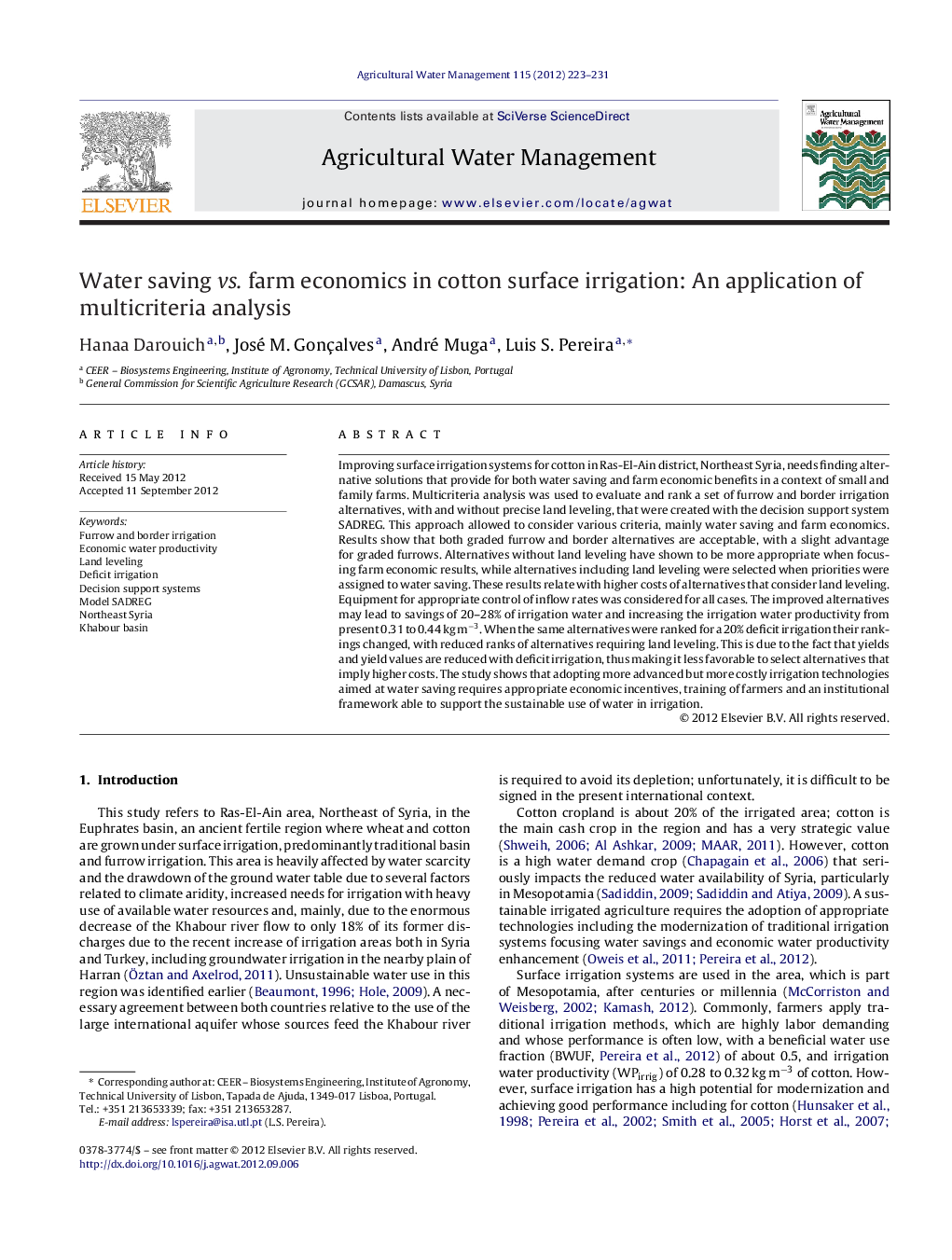| Article ID | Journal | Published Year | Pages | File Type |
|---|---|---|---|---|
| 4479067 | Agricultural Water Management | 2012 | 9 Pages |
Improving surface irrigation systems for cotton in Ras-El-Ain district, Northeast Syria, needs finding alternative solutions that provide for both water saving and farm economic benefits in a context of small and family farms. Multicriteria analysis was used to evaluate and rank a set of furrow and border irrigation alternatives, with and without precise land leveling, that were created with the decision support system SADREG. This approach allowed to consider various criteria, mainly water saving and farm economics. Results show that both graded furrow and border alternatives are acceptable, with a slight advantage for graded furrows. Alternatives without land leveling have shown to be more appropriate when focusing farm economic results, while alternatives including land leveling were selected when priorities were assigned to water saving. These results relate with higher costs of alternatives that consider land leveling. Equipment for appropriate control of inflow rates was considered for all cases. The improved alternatives may lead to savings of 20–28% of irrigation water and increasing the irrigation water productivity from present 0.31 to 0.44 kg m−3. When the same alternatives were ranked for a 20% deficit irrigation their rankings changed, with reduced ranks of alternatives requiring land leveling. This is due to the fact that yields and yield values are reduced with deficit irrigation, thus making it less favorable to select alternatives that imply higher costs. The study shows that adopting more advanced but more costly irrigation technologies aimed at water saving requires appropriate economic incentives, training of farmers and an institutional framework able to support the sustainable use of water in irrigation.
► The study applies a decision support system to rank improved furrow and border irrigation systems for cotton. ► Multicriteria analysis shows that alternatives considering land leveling are only feasible if priorities are assigned to water saving. ► When farm economics is aimed the selected alternatives are those requiring less costs. ► If deficit irrigation is considered less costly alternatives are better ranked. ► Appropriate control of inflow rates is a must for all cases.
